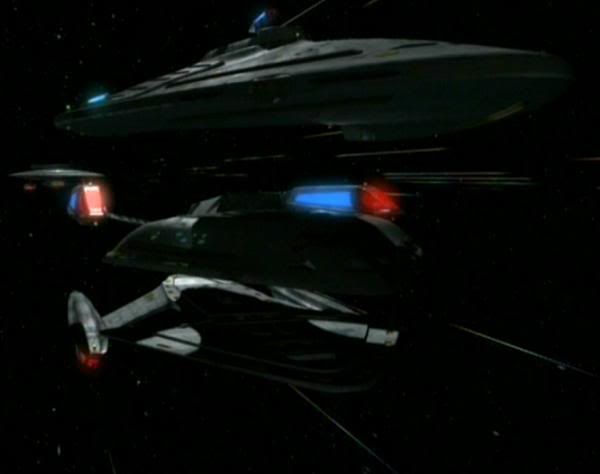Actually the only reason the galaxy class had a more routinized saucer sep function was because it was the first starship class designed to cary civilians.
Perhaps, perhaps not. Certainly many other starships of earlier design have also carried civilians, suggesting that the relationship between the saucer-sep function and the family-carrying function is not particularly close.
The Galaxy was the first ship that was made to separate, its hulls were capable of reversible saucer separation and were both equipped with independent flight and combat capabilities.
Yeah, it's that latter part of that sentence that is important. Most ship classes probably could split into their component parts even back in the mists of Starfleet prehistory - no doubt Archer's ship could discard her nacelles if need be, too. But the supposed new thing about
Galaxy was that the saucer could detach and reattach at will, perhaps even an unlimited number of times, and that both halves could continue to operate after separation.
Even that wasn't really spelled out on screen, though. There is no onscreen mention whatsoever that the
Galaxy would have been the first Starfleet ship class built with this capability, just like there is no onscreen evidence that the
Intrepid would have been the first one capable of planetfall and re-takeoff. It's just something the writers may have intended, and something other writers then put in writing in the paraphernalia books.
(Nor is there any evidence that the
Galaxy saucer would have lacked warp drive, and indeed every indication that it had a pretty good independent FTL means of motion. The only time we really see the saucer used supposedly as intended, to evacuate part of the people while the other half goes to a battle of her own choosing, is in "Arsenal of Freedom", and there the saucer is separated at sublight speed. In "Encounter at Farpoint", we saw an exceptional separation at high warp, followed by evidence that the saucer reached a distant star system in a matter of hours, at what must have been FTL speeds. So perhaps a "flying start" with separation at high warp allows for that? No, can't be, because then "Arsenal of Freedom" should also have employed a flying start - and since it did not, when it could have, we must deduce the saucer can work its own way to warp.)
Timo Saloniemi


